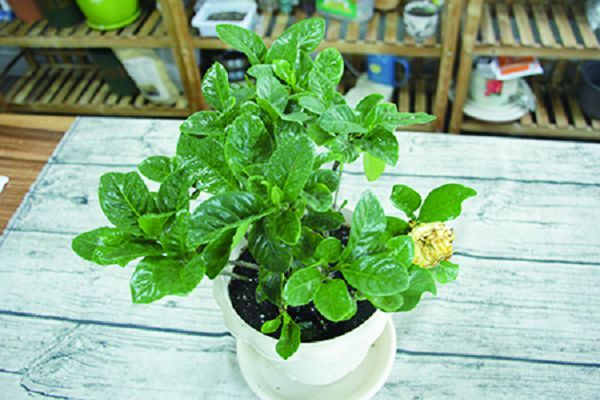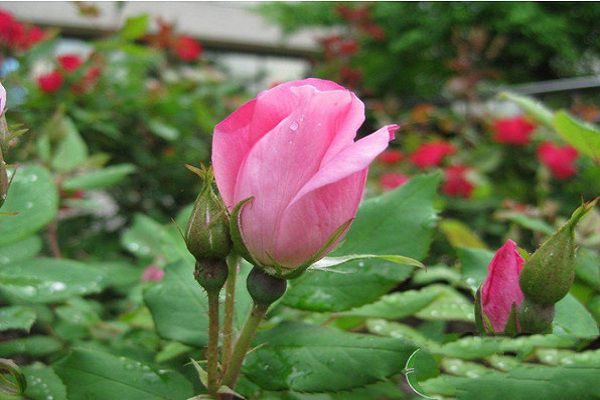Taboos and key points of pruning and shaping in soil selection of Family Flowers

One of the most important points of family flower cultivation is the choice of flower soil. What kind of soil is suitable for family flower cultivation? Today, the editor will not only bring you taboos for the selection of soil for growing flowers, but also talk about the main points of shaping and pruning flowers for growing flowers in the family.
In the daily breeding process of family flowers, reasonable pruning and debugging of flowers is necessary, so that flowers will be more beautiful and more pleasing to the eye. Adequate preparation should be made before pruning, including the understanding of flower parts, flower growth characteristics and so on. Pruning is generally divided into heavy cutting, medium cutting, light cutting and coring.
I. key points of family flower shaping and pruning
(1) heavy cutting
Flowers on annual branches such as jasmine, crape myrtle and rose are suitable for re-pruning, while those on biennial branches are taboo. The knife used in pruning should be sharp to ensure that the cut is smooth and prevent rupture, and the bud eyes that grow to the outside should be selected when trimming, so that the branches can be extended evenly, which is not only beautiful in plant shape, but also conducive to ventilation and light transmission.
(2) medium scissors
Potted flowers such as pomegranate, kumquat and wax plum, which have to be cut short to blossom, are suitable for medium scissors. It is necessary to pay equal attention to thinning and cutting, and for annual branches that have already flowered, 2-3 short buds should be left in the stem, so as to facilitate the emergence of lateral branches, and to remove long branches, cross branches and diseased branches.
(3) light scissors
Flowers such as green peach, magnolia and gardenia blooming on 2-year-old branches are suitable for light pruning, and only redundant side branches, diseased branches and top shoots are cut so that the main branches are strong. In addition, in pruning, artificial shaping can be carried out according to personal preferences and plant growth, such as umbrella shape, pagoda shape and so on.
(4) pick the heart
Herbaceous potted flowers such as daisies, calendula and violets should be plucked from the heart and head many times to make their lateral buds grow, and the plants are short, sturdy and beautiful, so as to increase the number of flowers and prolong the flowering time. And after the flowers are shedding, the residual flowers should be cut off in time to promote the rest of the flowers to bloom more vigorously.
Second, the selection of soil for growing flowers should be avoided.
(1) rotten leaf soil
Rotten leaf soil is the topsoil of forest zone, which is made from deciduous leaves of broad-leaved trees after long-term accumulation and maturation. it contains a lot of organic matter, loose and fertile, good air permeability and drainage, weak acidity, and is an excellent loosening agent for heavy clayey soil. it has strong ability to preserve water and fertilizer, and can be used alone to cultivate magnolia, orchid and cyclamen. In autumn and winter, the fallen leaves of broad-leaved trees can be collected by themselves (such as poplar, willow, elm, locust, etc.), mixed with garden soil for 1-2 years, and then sifted and used when the fallen leaves are fully rotten. Generally, rotten leaf soil is an excellent pot soil, and it can also be mixed with other substrates. It is suitable for sowing, transplanting seedlings and cultivating many kinds of common flowers.
(2) pine needle soil
Pine needle soil is a humus formed by years of decay of the fallen leaves of pine trees in mountain forests. Pine needle soil is grayish brown, loose and fertile, good air permeability and drainage, strong acid reaction, suitable for rhododendron, gardenia, camellia and other flowers.
(3) Peat soil
Peat soil, also known as black soil and peat, is carbonized by the plant remains of low temperature and wetlands through the action of peat moss for thousands of years. Peat soil is soft and loose, free of pathogen spores and harmful eggs, good drainage and air permeability, strong ability of fertilizer and water storage, weak acid reaction, so it is a good potted soil and cutting medium. Brown peat is often used to prepare nutritious soil in the north, and it is more suitable to use peat soil to cultivate acid-loving flowers such as orchid, camellia, sweet-scented osmanthus, magnolia and so on.
(4) Pond mud
Pond mud, also known as river mud, is the sedimentary soil of the river bottom pond, rich in organic matter, black, neutral or slightly alkaline. Generally, the silt from ponds or lakes is harvested in autumn and winter. After drying, freezing and weathering, it can be the best soil for cultivating aquatic flowers. After drying and crushing, it is mixed with coarse sand, husk ash or other light and loose soil, which can be used for the planting of foliage flowers.
(5) turf soil
In natural pastures or grasslands, the turf on the surface of 10cm is dug up, accumulated layer upon layer, and then matured for a year or more, sifted to remove stones, grass roots, etc. Turf soil has sufficient nutrients and weak acid reaction, so it can be planted with rose, carnation, Dali flower and so on.
(6) Marsh soil
After the marsh is dry, the surface soil is a good raw material for basin soil. Swamp soil is rich in humus, long-lasting fertility and acidic. But it is easy to harden and crack after drying, so it should be mixed with coarse sand. The nutritious soil for flower cultivation must choose nutritious ingredients and avoid contaminated soil.
Related
- What if the leaves of potted flowers turn yellow?
- Florescence Control of several Flowers
- Anti-freezing technology and post-freezing nursing technology of flowers
- What is the classification of flowers? What are the common methods of flower classification?
- Prevention and control of alkali and acid damage of flowers in courtyard
- Technology of Anti-freezing and restoring growth of Flower seedlings in greenhouse and greenhouse
- How does flower fertilization not hurt the root? Fertilization technology of flowers
- Key points of disinfection in flower greenhouse
- Several pesticides that are banned or used cautiously in flowers
- How to fertilize the flowers that watch the leaves?



